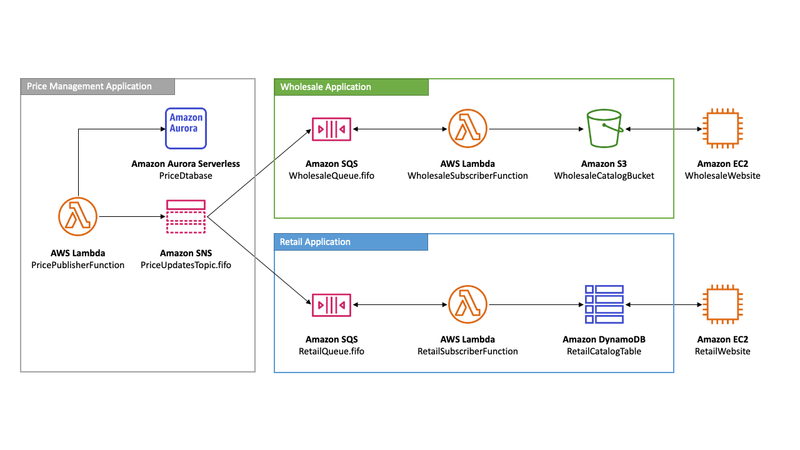
AWS Messages - Amazon SQS and SNS
- A particularly well-suited architecture for the Cloud is the distributed architecture: each application component can be scaled according to needs. One variation of this type of architecture is microservices.
- This raises the problem of communication between these components: coupled interactions are difficult to maintain and problematic in the case of different scaling sizes.
An intermediate software brick (Middleware) quickly appeared to ensure decoupling and asynchronous communication between these components.
We will see here 2 types of Message-Oriented Middleware (MOM):
- Amazon SQS which is a Message Queue
- Amazon SNS following a Publish/Subscribe template of Messages
Amazon Simple Queue Service
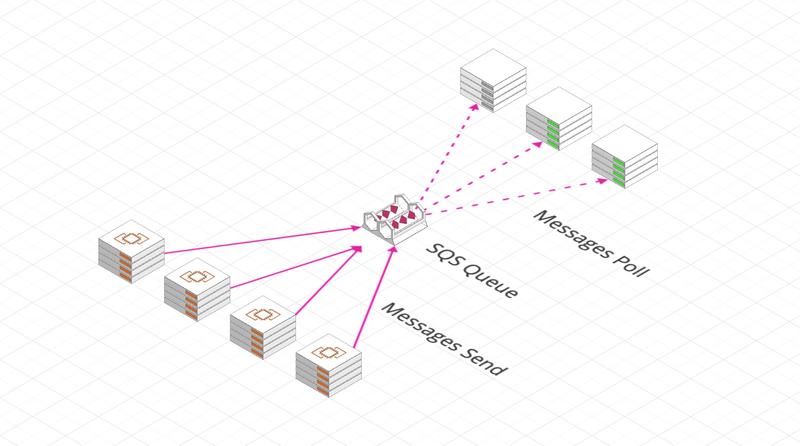
Characteristics
Amazon Simple Queue Service or SQS is a message queue service, entirely managed by AWS:
- Unlimited queues and messages
- Message size up to 256 KB
- If you need larger messages, use Amazon SQS Extended Client Library for Java which stores the content of the message in Amazon S3 and just returns its reference
- Default 4-day message retention (up to 14 days)
Standard vs FIFO
It supports 2 types of Queues with different characteristics:
| Standard Queue | FIFO Queue |
|---|---|
| Unlimited Throughput: supports virtually unlimited number of transactions per second (TPS) | High Throughput: By default, supports up to 300 messages per second (300 sending, receiving or deleting operations per second). If you batch 10 messages per operation (maximum), FIFO queues can support up to 3000 messages per second. |
| At-Least-Once Delivery A message is given at least once, but may be given in several copies. | Exactly-Once Processing : a message is delivered once and remains available until it is processed and deleted by a recipient. No duplicate. |
| Best-Effort Ordering Messages may be handed out in a different order than they were sent. | First-In-First-Out Delivery: the order in which messages are sent and received is rigorously maintained (First In, First Out). |
How it works
- Generating a message by calling the SendMessage API using the SDK
- Message consumption by calling ReceiveMessage (possibility to receive 1 to 10 messages per call)
- The message becomes invisible for the time defined in Message visibility timeout (default 30s)
- At the end of Message visibility timeout, the message becomes visible again in the Queue and can be consumed again by another consumer if it has not been deleted in the meantime or if this time has not been modified by the consumer with the API ChangeMessageVisibility
- Delete message by calling DeleteMessage
Security
- Encryption in transit (HTTPS) and at rest (AWS KMS)
- Access control of the SQS API by an IAM Policy
- SQS Access Policy for:
- Cross-account Queue access
- Give access to the Queue, in writing, to other AWS services
Auto Scaling
A classic architecture is the Auto Scaling of consumers by the Queue itself:
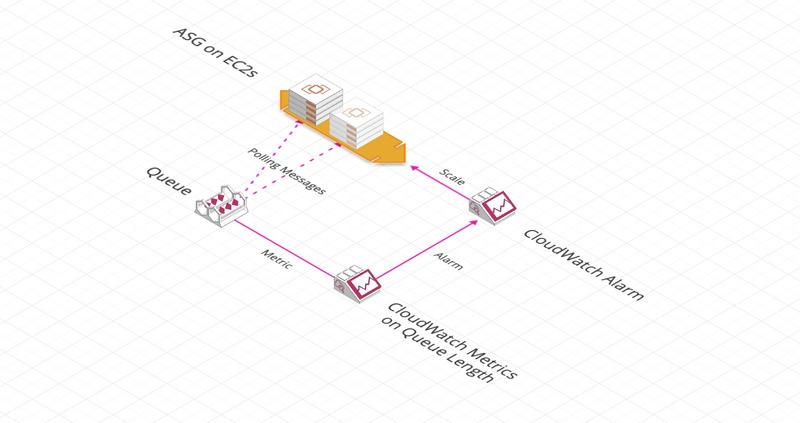
Other Parameters
Dead Letter Queue
When a message returns to the Queue one MaximumReceives time, it is possible to redirect it to another Queue, the Dead Letter Queue for further analysis
Delay Queue
When it arrives in the Queue, a message can be hidden from consumers during the Delay Queue of a maximum of 15 min
Long Polling
When a consumer requests a message from an empty Queue, they can wait Long Polling sec. for a message to arrive. Its possible value ranges from 1 to 20 sec
FIFOs’ Specific Parameters
Duplication
There are 2 methods of duplicate calculation in the FIFO Queue:
- Hash SHA-256 message content
- Deduplication ID indicated in the generated message explicitly
Message Grouping
In the same FIFO, it is possible to group messages by specifying a MessageGroupID.
In this case, each Message Group can only be consumed by one consumer and the order of the messages is specific to each group: this allows a parallel consumption of the messages of a FIFO.
Amazon Simple Notification Service
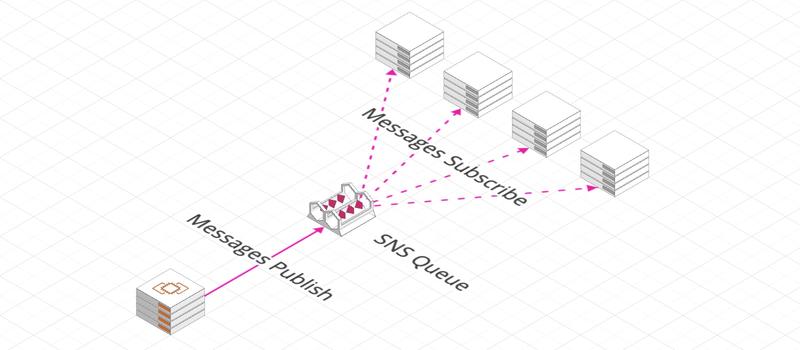
Amazon Simple Notification Service (Amazon SNS) is an automatically managed AWS service that delivers messages from Publishers to Subscribers (model Pub/Sub also known as Producers/Consumers):
- A SNS Queue is made up of Topics and it is called Notification rather than Message
- There may be 100.000 Topics per SNS Queue
- A Subscriber subscribes to a Topic and receives all Notifications (Messages) posted on it
- It can also filter Topic Notifications to receive only certain
There may be up to 10,000,000 Subscribers per Topic
- Publishers that can issue notifications in SNS are:
- Many AWS Services:
- CloudWatch and its alarms
- Auto Scaling Groups
- Amazon S3 events
- The CloudFormation events
- Many AWS Services:
- Subscribers may be of the following type:
- Application-To-Application (A2A) for inter-application messages to:
- Amazon Kinesis Data Firehose
- Lambda functions
- SQS tails
- HTTP/S endpoints
- AWS Event Fork Pipelines
- Application-To-Person (A2P) to notify users using:
- Mobile applications
- Mobile phone number
- Email addresses
- Application-To-Application (A2A) for inter-application messages to:
We find many of the same features as Amazon SQS especially in terms of Security and types of Standard Queue or FIFO
Fan Out architecture pattern
The use of Amazon SNS + Amazon SQS makes it possible to design perfectly decoupled architectures, without loss of data, parallel and asynchronous, called Fan Out (to break down a large processing into several smaller ones for example)
Fan Out
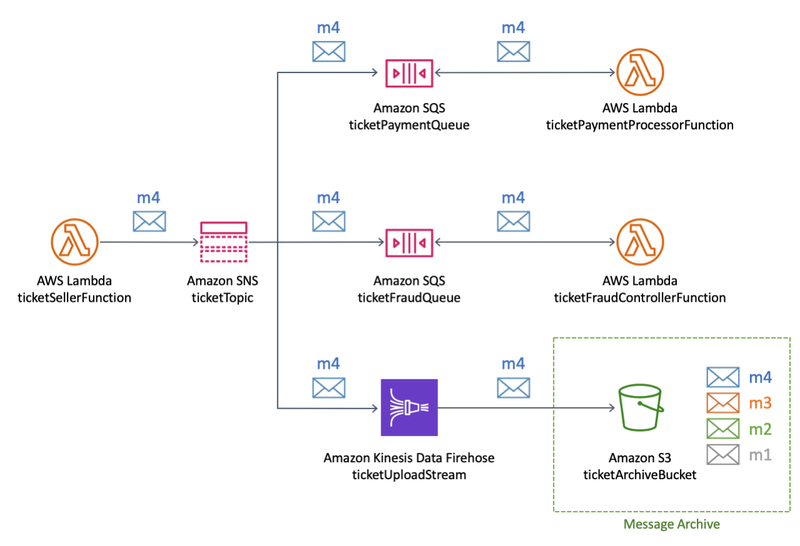
FIFO Fan Out
